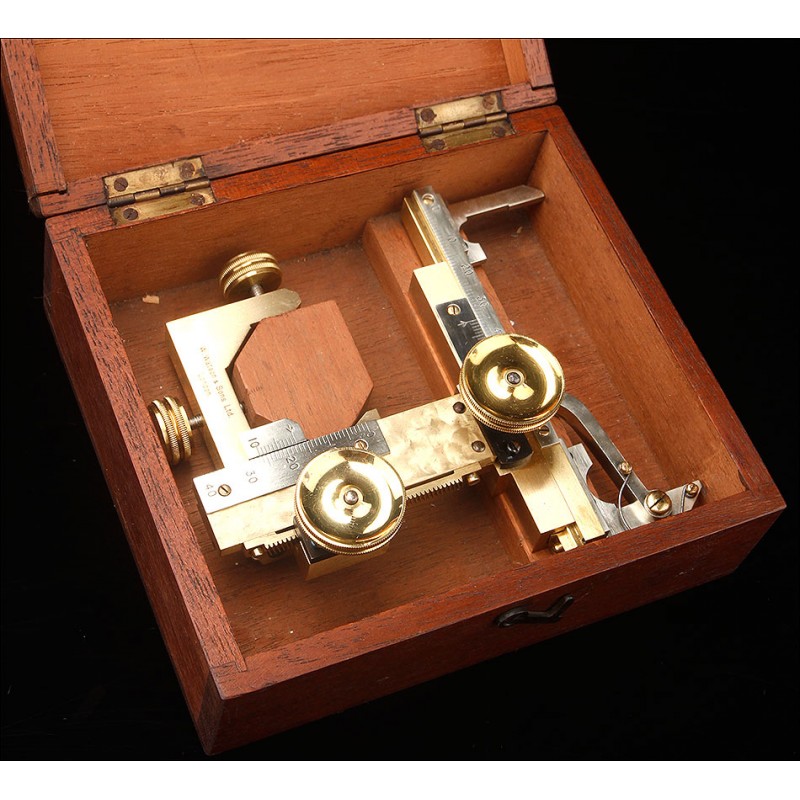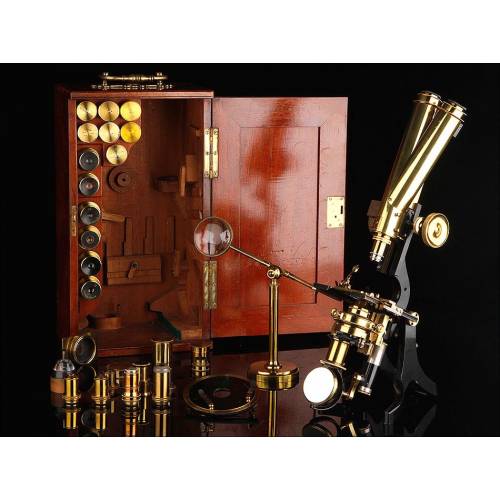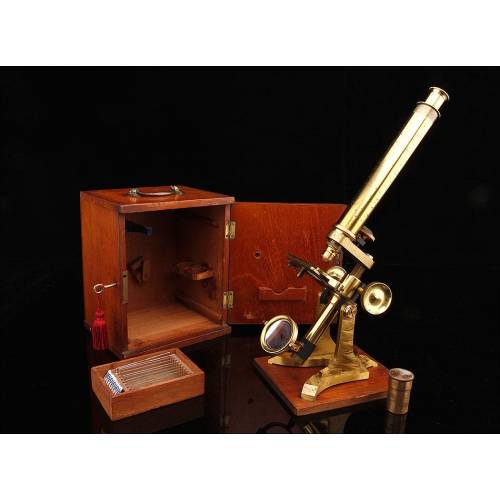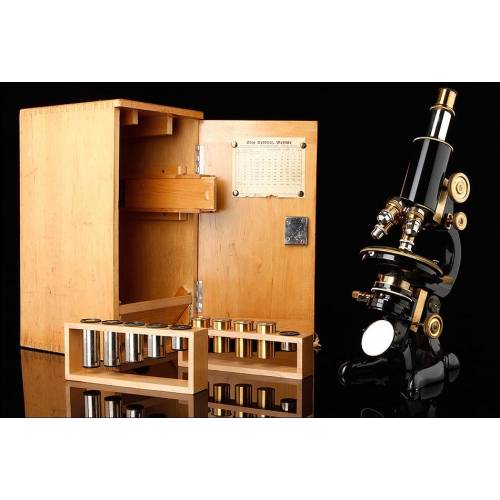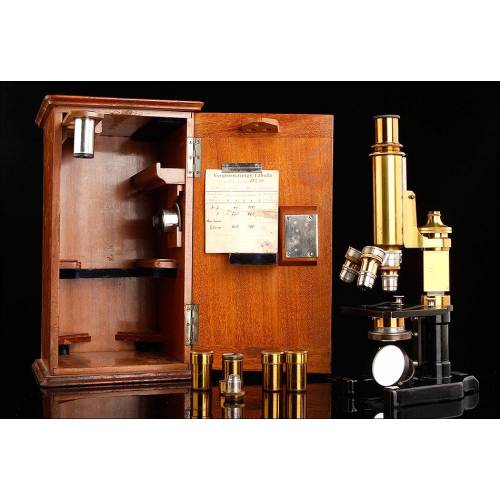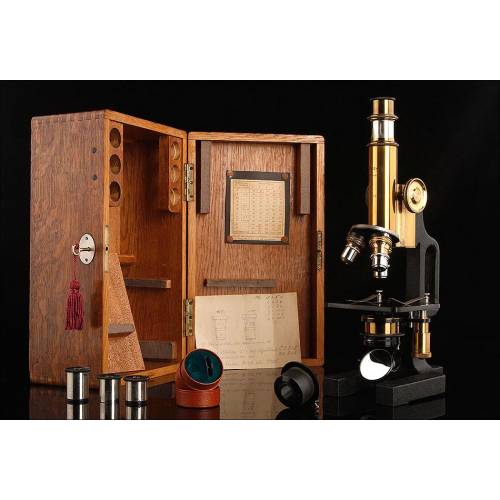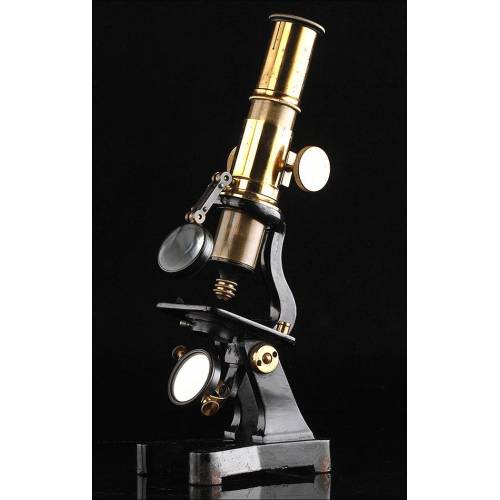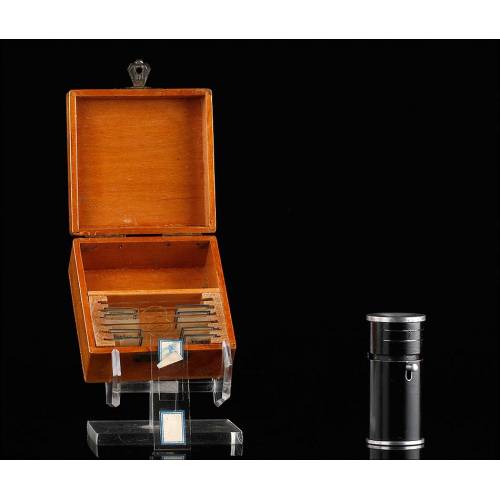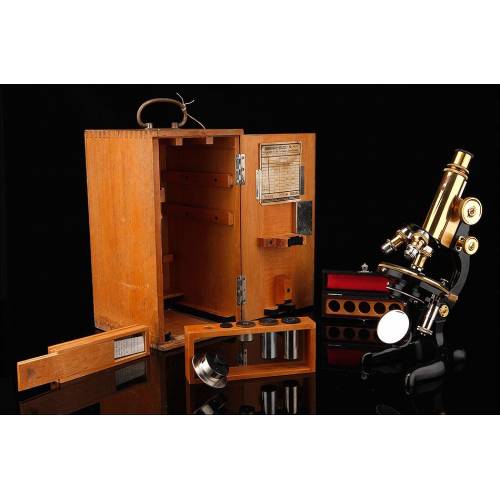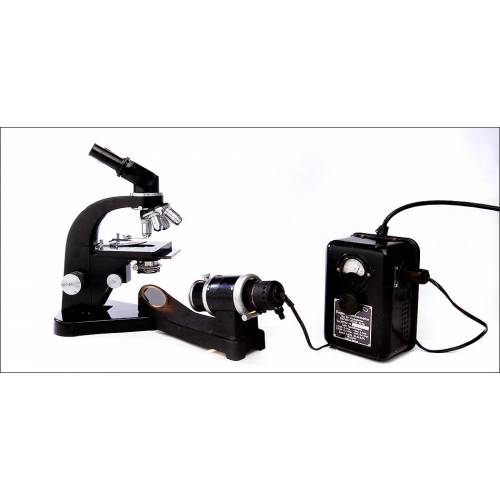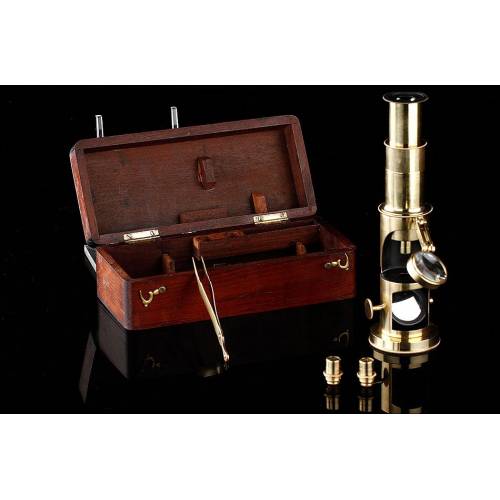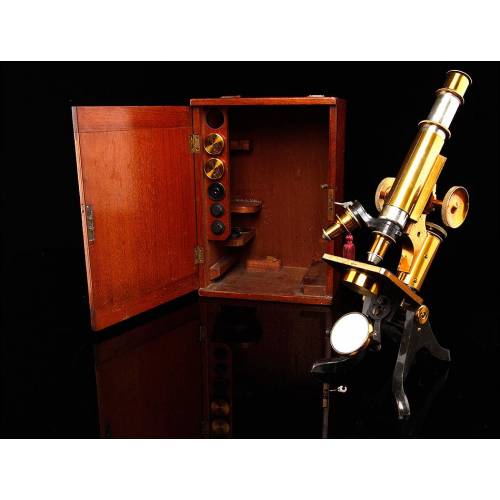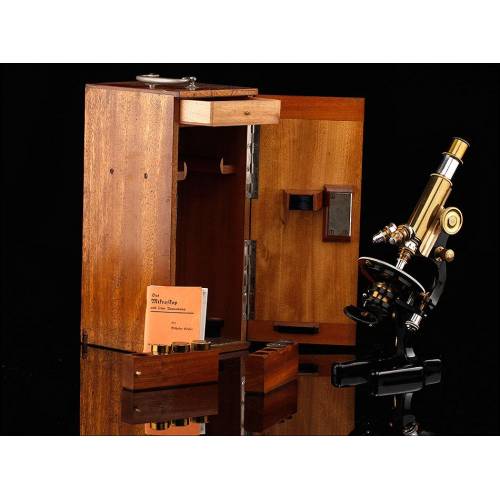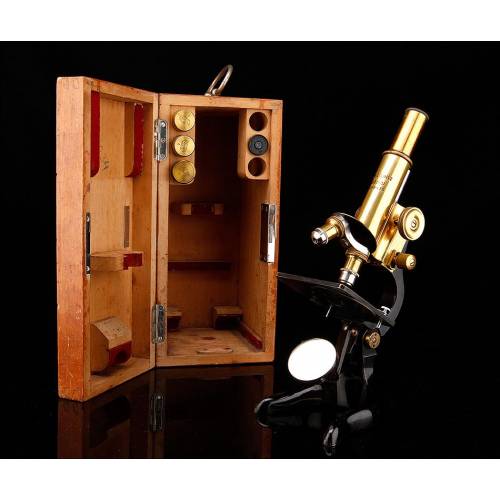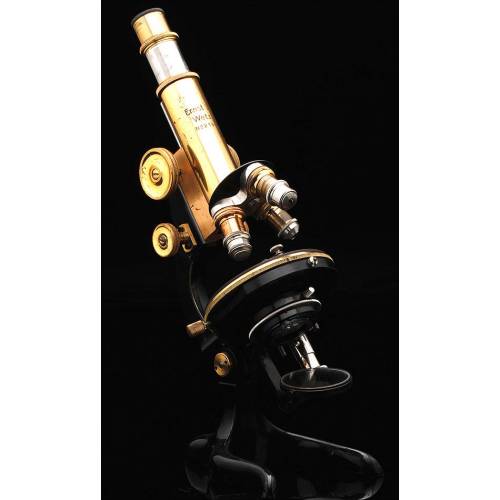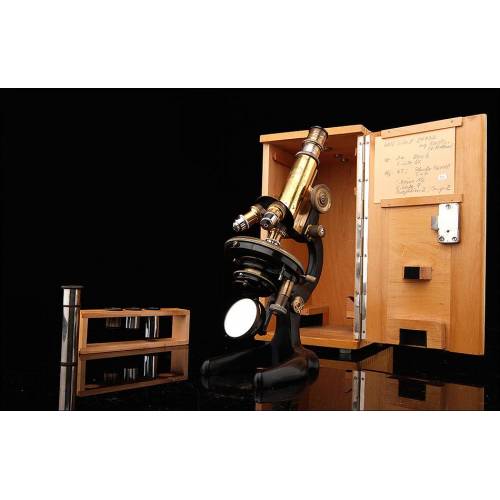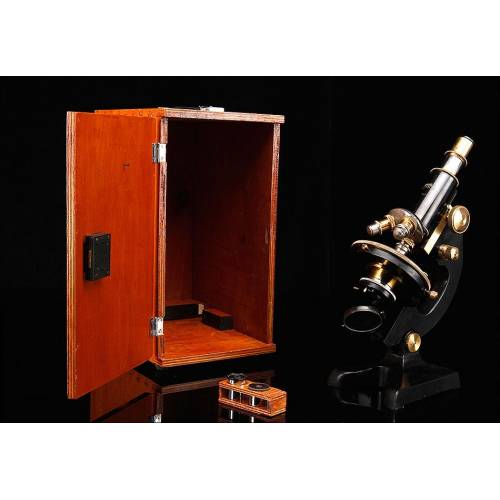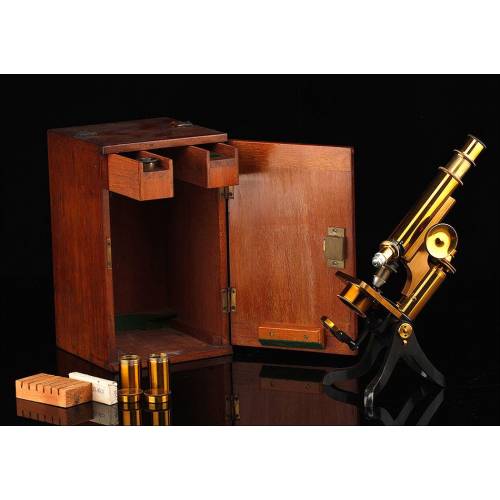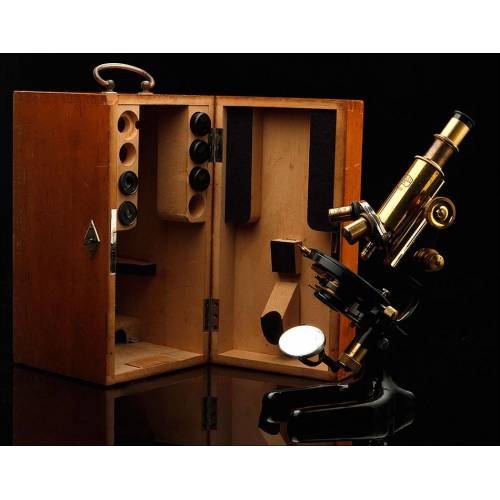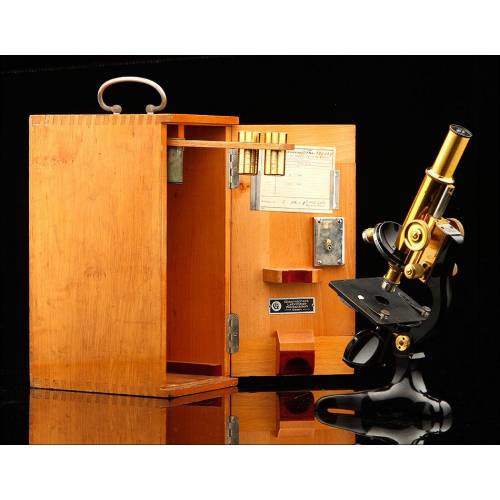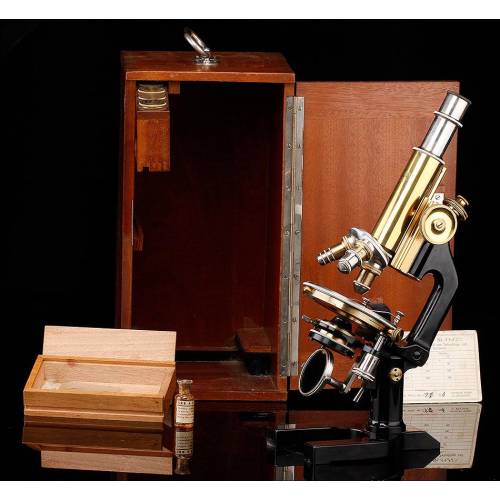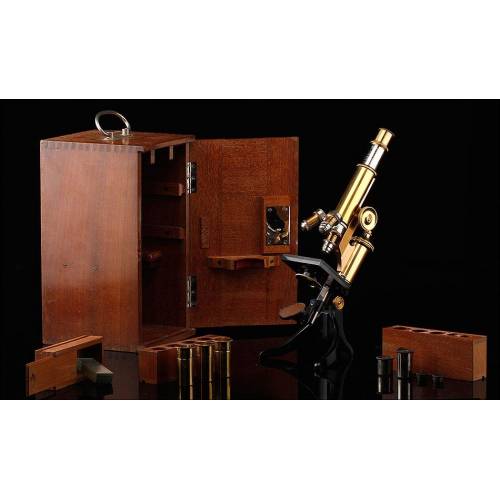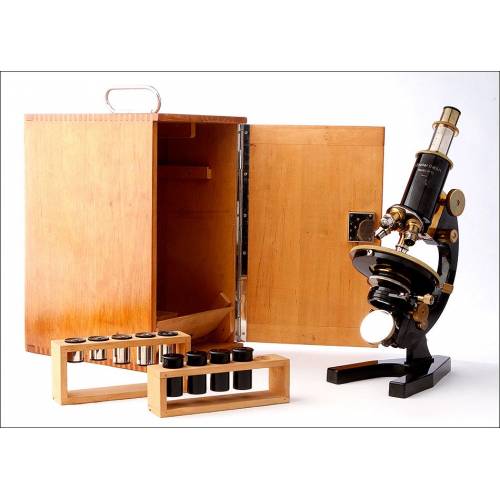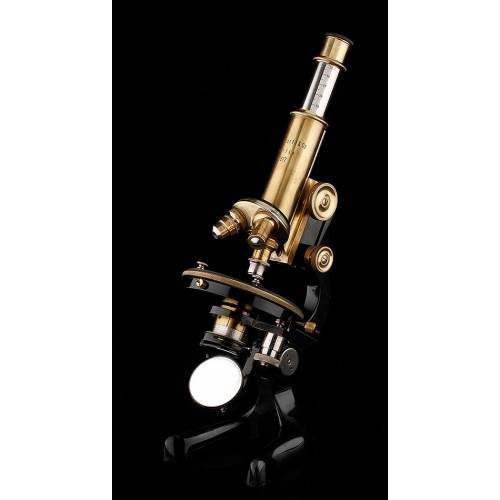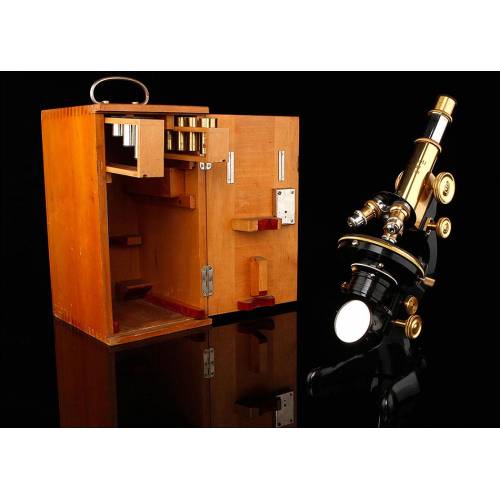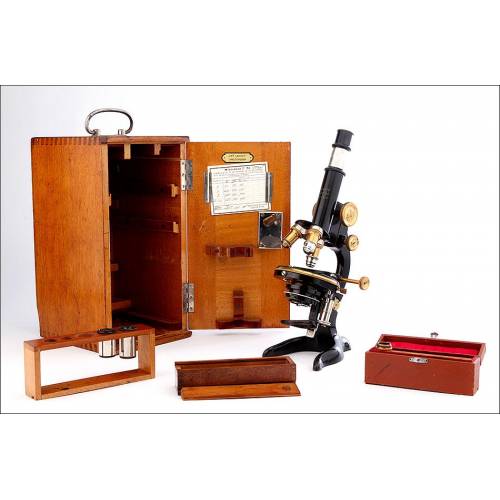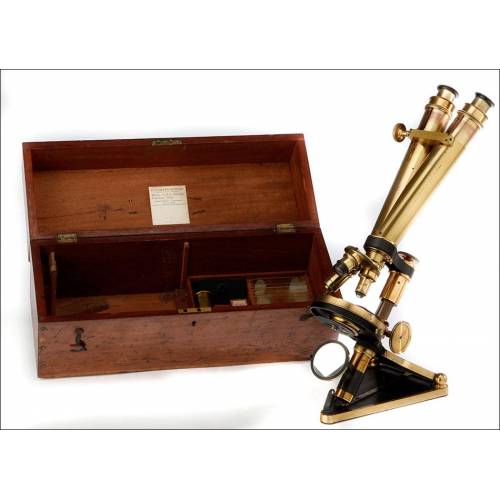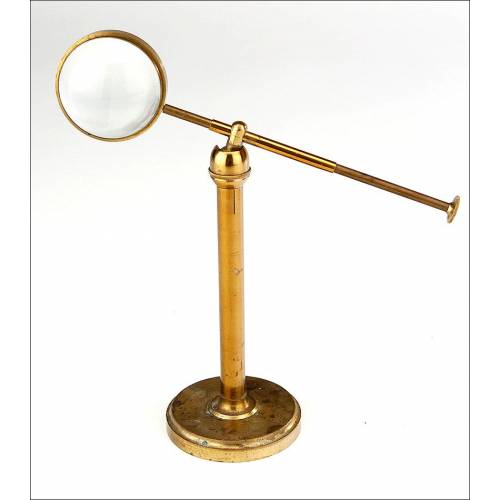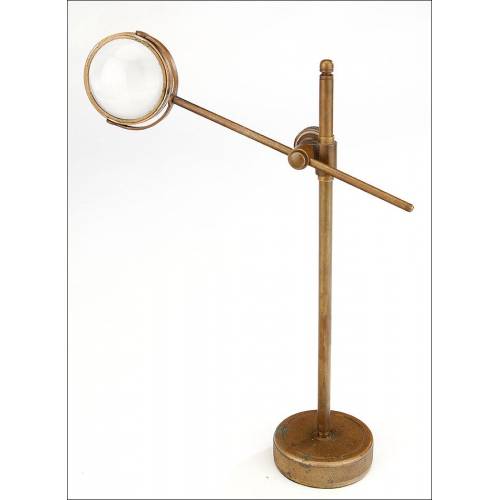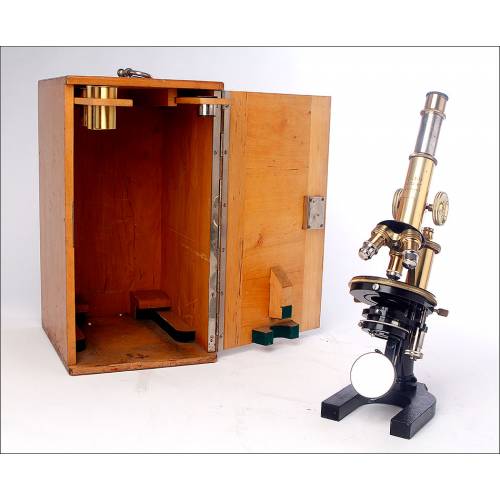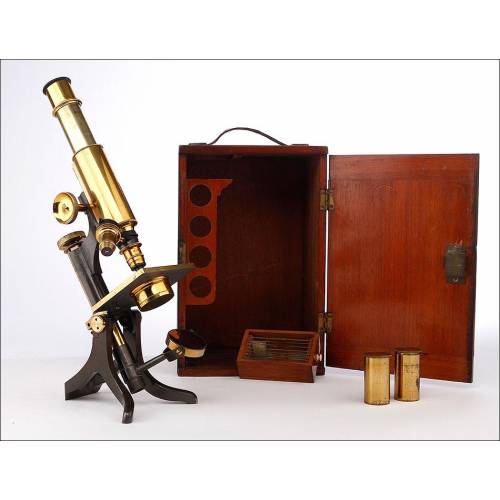A-999
Micrometer System, Circa 1900
Micrometric adjustment system for microscope stages. In excellent condition and in original case.
Sold!
This fine device is a micrometric adjustment system Watson & Sons designed to move precise and fluidly the sample plates to be watched with antique microscopes. It comes in its original wooden case and has survived to our days in amazing condition, almost new. The instrument was manufactured in London in the early 20th century and is made of golden brass. It preserves all its original component parts that move in a surprisingly fluid way. The metal looks shiny and even, with all the inscriptions clearly engraved in its surface. One of the pieces that make up the article bears the inscription W. Watson & Sons Ltd. London. This is the name of the manufacturer, a firm founded in 1837 by William Watson. The company started selling lanterns, slides and associated equipment. In 1868 the name was changed to W. Watson & Son and they established in an address that would be the same until the end of the business. It was in the 1870s when they started to make photographic and optic material amd microscopes. After the death of William Watson, his other son Charles Henry joined the firm and it acquired its final name, W. Watson & Sons. They continued active until 1948, when the business dissolved. The delicate instrument is composed of brass rectangular pieces and screws, combined with silvery metal rods and mobile components. It has also a numbered metal scale designed to adjust the samples position within a millimeter. The system can be attached to any antique microscope that accepts its size and configuration, and is ready to be used. As stated at the beginning, it comes in a sober mahogany wooden box in very good condition and with the original hinges and shutting hook. Its precision and its striking condition turn this micrometric adjustment system into a collectors piece, as attractive as functional. Measurements (open box): Width: 5.33 in / 14 cm. Depth: 9.29 in / 24 cm

